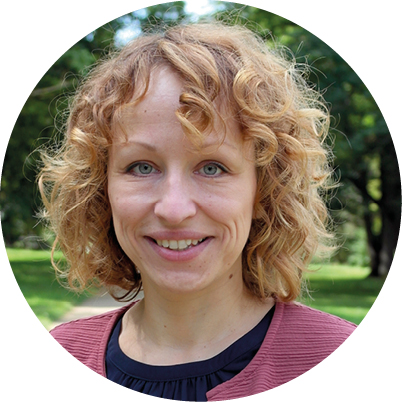
OsteoHematology
Hidden Secrets of the Osteohematopoietic Niche
In the osteohematopoietic niche, home of bone and blood stem cells, the aging process affects both cell types. Clinically, this translates into fragility fractures and anemia. Myelodysplastic syndrome (MDS) is a human disease of age-related impaired function of the osteohematopoietic niche. To disentangle the alterations in MDS, a comprehensive approach with suitable disease models is required.
Using big data analysis of almost 900,000 patients, we recently found that MDS patients indeed have 2-fold higher risk for osteoporosis. Moreover, treatment of cytopenia in MDS may require continuous blood transfusions posing the risk of iron overload or treatment with erythropoiesis-stimulating agents, both of which negatively impact on bone. Despite recent progress, MDS is far from being fully understood and disease-specific therapies are missing. Elucidation of key mechanisms offers the prospects of improving bone function and hematopoietic function alike. This motivated researchers at the Bone Lab to take a closer look.
Principal Investigators

Martina Rauner, PhD
«The area in which we made our first discovery that led to a patent – hopefully it will make it all the way into clinical application!»

Ulrike Baschant, PhD
«The area which taught me that the best scientific discoveries happen while you are busy formulating other hypotheses.»

Heike Weidner, PhD
«Osteology meets hematology. Now they walk together to unravel the mystery of osteo-hematopoietic niche.»

María Ledesma-Colunga, PhD
«Always be creative and curious, because always there will be something to discover.»

Lorenz Hofbauer, MD
«What started as a research project on iron metabolism, turned out to be useful for treatment of major injury.»
-

- Vanessa Passin, M.Sc.
-

- Sven Spangenberg, Dipl.-Pharm.
-

- Karolina Basiak, M.Sc.
-

- Anupam Sinha, PhD
-

- Maria Wobst, M.Sc.
-

- Claudia Krause
-

- Anja Motz
Antonella Roetto, University of Torino, Italy
Ben Wielockx, Universitätsklinikum Dresden
Igor Theurl, Medical University Innsbruck, Austria
Yankel Gabet, Tel-Aviv University, Israel
Drorit Neumann, Tel-Aviv University, Israel
Jochen Schmitt, Center for Evidence-Based Healthcare, Universitätsklinikum Dresden
Uwe Platzbecker, Universitätsklinikum Leipzig
Martina Muckenthaler, Universitätsklinikum Heidelberg
Claudia Waskow, Fritz-Lipmann Institute, Jena
Anke Hannemann, Universität Greifswald
Rosano G, Ezekowitz J, Nemeth E, Ponikowski P, Rauner M, Seid M, Spahn DR, Stein J, Wish J, Mentz RJ. Evaluating the Risk of Hypophosphatemia with Ferric Carboxymaltose and the Recommended Approaches for Management: A Consensus Statement. J Clin Med. 2025 Jul 9;14(14):4861
Wiemers T, Ferle M, Ader J, Sotikova V, Fandrei D, Grieb N, Fischer L, Born P, Weidner H, Wang SY, Jentzsch M, Franke GN, Herling C, Metzeler K, Herling M, Heyn S, Denecke T, Reiche K, Platzbecker U, Vucinic V, Neumuth T, Meyer HJ, Merz M. Prognostic Implications of Splenomegaly in BCMA-Directed CAR T-Cell Therapy for Relapsed Myeloma. Transplant Cell Ther. 2025 Jul 16:S2666-6367(25)01289-8.
Rauner M. Iron and Bone Pathophysiology. Adv Exp Med Biol. 2025;1480:311-325
Born P, Fandrei D, Wang SY, Perez-Fernandez C, Fischer L, Ussmann J, Bach E, Hoffmann S, Metzeler KH, Herling M, Herling C, Jentzsch M, Boldt A, Seiffert S, Baber R, Weidner H, Franke GN, Denecke T, Sabri O, Platzbecker U, Vucinic V, Meyer HJ, Kurch L, Merz M. Prognostic significance of PET/CT for CAR T cell therapy in relapsed/refractory multiple myeloma. Hemasphere. 2025 Jun 15;9(6):e70159
Passin V, Ledesma-Colunga MG, Baschant U, Hofbauer LC, Rauner M. Bone phenotype in male and female mice after knockdown of transferrin receptor 1 in osterix-expressing cells. JBMR Plus. 2025 May 23;9(7):ziaf069.
Fandrei D, Seiffert S, Rade M, Rieprecht S, Gagelmann N, Born P, Wiemers T, Weidner H, Kreuz M, Schassberger T, Koßmann J, Mangold M, Fürst D, Fischer L, Baber R, Heyn S, Wang SY, Bach E, Hoffmann S, Metzeler KH, Herling M, Jentzsch M, Franke GN, Köhl U, Friedrich M, Boldt A, Reiche K, Platzbecker U, Vucinic V, Merz M. Bispecific Antibodies as Bridging to BCMA CAR-T Cell Therapy for Relapsed/Refractory Multiple Myeloma. Blood Cancer Discov. 2025 Jan 8;6(1):38-54
Burden AM, Martinez-De la Torre A, Burkard T, Immoos M, Hofbauer LC, Steinbicker AU, Rauner M. Increased risk of fracture among patients with iron overload: a population-based matched cohort study. J Clin Endocrinol Metab. 2024 Nov 18:dgae807.
Passin V, Ledesma-Colunga MG, Altamura S, Muckenthaler MU, Baschant U, Hofbauer LC, Rauner M. Depletion of macrophages and osteoclast precursors mitigates iron overload-mediated bone loss. IUBMB Life. 2025 Jan;77(1):e2928.
Dogan DY, Hornung I, Pettinato M, Pagani A, Baschant U, Seebohm G, Hofbauer LC, Silvestri L, Rauner M, Steinbicker AU. Bone phenotyping of murine hemochromatosis models with deficiencies of Hjv, Alk2, or Alk3: The influence of sex and the bone compartment. FASEB J. 2024 Nov 30;38(22):e70179.
Fandrei D, Seiffert S, Rade M, Rieprecht S, Gagelmann N, Born P, Wiemers T, Weidner H, Kreuz M, Schassberger T, Kossmann J, Mangold M, Furst D, Fischer L, Baber R, Heyn S, Wang SY, Bach E, Hoffmann S, Metzeler KH, Herlling M, Jentzsch M, Franke GN, Kohl U, Friedrich M, Boldt A, Reiche K, Platzbecker U, Vucinic V, Merz M. Bispecific antibodies as bridging to BCMA CAR-T cell therapy for relapsed/refractory multiple myeloma. Blood Cancer Discov. 2024 Oct 23.
Weidner H, Baschant U, Ledesma-Colunga MG, Basiak K, Tsourdi E, Sockel K, Götze KS, Rivière J, Platzbecker U, Hofbauer LC, Rauner M. Bone marrow transplantation reduces FGF-23 levels and restores bone formation in myelodysplastic neoplasms. Leukemia. 2024 Aug;38(8):1853-1857.
Winter S, Götze KS, Hecker JS, Metzeler KH, Guezguez B, Woods K, Medyouf H, Schäffer A, Schmitz M, Wehner R, Glauche I, Roeder I, Rauner M, Hofbauer LC, Platzbecker U. Clonal hematopoiesis and its impact on the aging osteo-hematopoietic niche. Leukemia. 2024 May;38(5):936-946.
Fischer L, Grieb N, Born P, Weiss R, Seiffert S, Boldt A, Fricke S, Franz P, Heyn S, Kubasch AS, Baber R, Weidner H, Wang SY, Bach E, Hoffmann S, Ussmann J, Kirchberg J, Hell S, Schwind S, Metzeler KH, Herling M, Jentzsch M, Franke GN, Sack U, Reiche K, Köhl U, Platzbecker U, Vucinic V, Merz M. Cellular dynamics following CAR T cell therapy are associated with response and toxicity in relapsed/refractory myeloma. Leukemia. 2024 Feb;38(2):372-382.
Lösser L, Ledesma-Colunga MG, Andrés Sastre E, Scholtysek C, Hofbauer LC, Noack B, Baschant U, Rauner M. Transferrin receptor 2 mitigates periodontitis-driven alveolar bone loss. J Cell Physiol. 2024 Feb;239(2):e31172.
Ledesma-Colunga MG, Passin V, Vujic Spasic M, Hofbauer LC, Baschant U, Rauner M. Comparison of the effects of high dietary iron levels on bone microarchitecture responses in the mouse strains 129/Sv and C57BL/6J. Sci Rep. 2024 Feb 28;14(1):4887.
Baschant U, Fuqua BK, Ledesma-Colunga M, Vulpe CD, McLachlan S, Hofbauer LC, Lusis AJ, Rauner M. Effects of dietary iron deficiency or overload on bone: Dietary details matter. 2024 Apr 2;184:117092.
Ledesma-Colunga MG, Baschant U, Weidner H, Alves TC, Mirtschink P, Hofbauer LC, Rauner M. Transferrin receptor 2 deficiency promotes macrophage polarization and inflammatory arthritis. Redox Biol. 2023;60:102616.
Weidner H, Wobus M, Hofbauer LC, Rauner M, Platzbecker U. Luspatercept mitigates bone loss driven by myelodysplastic neoplasms and estrogen-deficiency in mice. Leukemia. 2022:2715-2718.
Hartmann L, Hecker JS, Rothenberg-Thurley M, Rivière J, Jentzsch M, Ksienzyk B, Buck MC, van der Garde M, Fischer L, Winter S, Rauner M, Tsourdi E, Weidner H, Sockel K, Schneider M, Kubasch AS, Nolde M, Hausmann D, Lützner J, Goralski S, Bassermann F, Spiekermann K, Hofbauer LC, Schwind S, Platzbecker U, Götze KS, Metzeler KH. Compartment-specific mutational landscape of clonal hematopoiesis. Leukemia. 2022:2647-2655.
Awida Z, Hiram-Bab S, Bachar A, Saed H, Zyc D, Gorodov A, Ben-Califa N, Omari S, Omar J, Younis L, Iden JA, Graniewitz Visacovsky L, Gluzman I, Liron T, Raphael-Mizrahi B, Kolomansky A, Rauner M, Wielockx B, Gabet Y, Neumann D. Erythropoietin Receptor (EPOR) Signaling in the Osteoclast Lineage Contributes to EPO-Induced Bone Loss in Mice. Int J Mol Sci. 2022;23:12051.
Hettler F, Schreck C, Marquez SR, Engleitner T, Vilne B, Landspersky T, Weidner H, Hausinger R, Mishra R, Oellinger R, Rauner M, Naumann R, Peschel C, Bassermann F, Rad R, Istvanffy R, Oostendorp RAJ. Osteoprogenitor SFRP1 prevents exhaustion of hematopoietic stem cells via PP2A-PR72/130-mediated regulation of p300. Haematologica. 2022 Aug 11.
Baschant U, Altamura S, Steele-Perkins P, Muckenthaler MU, Spasić MV, Hofbauer LC, Steinbicker AU, Rauner M. Iron effects versus metabolic alterations in hereditary hemochromatosis driven bone loss. Trends Endocrinol Metab. 2022;33:652-663.
Herbig M, Jacobi A, Wobus M, Weidner H, Mies A, Kräter M, Otto O, Thiede C, Weickert MT, Götze KS, Rauner M, Hofbauer LC, Bornhäuser M, Guck J, Ader M, Platzbecker U, Balaian E. Machine learning assisted real-time deformability cytometry of CD34+ cells allows to identify patients with myelodysplastic syndromes. Sci Rep. 2022;12:870.
Hecker JS, Hartmann L, Rivière J, Buck MC, van der Garde M, Rothenberg-Thurley M, Fischer L, Winter S, Ksienzyk B, Ziemann F, Solovey M, Rauner M, Tsourdi E, Sockel K, Schneider M, Kubasch AS, Nolde M, Hausmann D, Paulus AC, Lützner J, Roth A, Bassermann F, Spiekermann K, Marr C, Hofbauer LC, Platzbecker U, Metzeler KH, Götze KS. CHIP and hips: clonal hematopoiesis is common in patients undergoing hip arthroplasty and is associated with autoimmune disease. Blood. 2021 4;138:1727-1732.
Wobus M, Mies A, Asokan N, Oelschlägel U, Möbus K, Winter S, Cross M, Weidner H, Rauner M, Hofbauer LC, Bornhäuser M, Platzbecker U. Luspatercept restores SDF-1-mediated hematopoietic support by MDS-derived mesenchymal stromal cells. Leukemia. 2021;35:2936-2947.
Rauner M, Murray M, Thiele S, Watts D, Neumann D, Gabet Y, Hofbauer LC, Wielockx B. Epo/EpoR signaling in osteoprogenitor cells is essential for bone homeostasis and Epo-induced bone loss. Bone Res. 2021 13;9:42.
Ledesma-Colunga MG, Weidner H, Vujic Spasic M, Hofbauer LC, Baschant U, Rauner M. Shaping the bone through iron and iron-related proteins. Semin Hematol. 2021;58:188-200.
Meng X, Wielockx B, Rauner M, Bozec A. Hypoxia-Inducible Factors Regulate Osteoclasts in Health and Disease. Front Cell Dev Biol. 2021 18;9:658893.
Hannemann A, Nauck M, Völzke H, Weidner H, Platzbecker U, Hofbauer LC, Rauner M, Baschant U. Interactions of Anemia, FGF-23, and Bone in Healthy Adults-Results From the Study of Health in Pomerania (SHIP). J Clin Endocrinol Metab. 2021 Jan 1;106:e288-e299.
Ledesma-Colunga MG,Baschant U, Fiedler IAK, Busse B, Hofbauer LC, Muckenthaler MU, Altamura S, Rauner M. Disruption of the hepcidin/ferroportin regulatory circuitry causes low axial bone mass in mice. 2020;137:115400.
Weidner H, Baschant U, Lademann F, Ledesma Colunga MG, Balaian E, Hofbauer C, Misof BM, Roschger P, Blouin S, Richards WG, Platzbecker U, Hofbauer LC, Rauner M. Increased FGF-23 levels are linked to ineffective erythropoiesis and impaired bone mineralization in myelodysplastic syndromes. JCI Insight. 2020;5:e137062.
Pagani A, Pettinato M, Colucci S, Dulja A, Rauner M, Nai A, Camaschella C, Altamura S, Muckenthaler MU, Silvestri L. Hemochromatosis proteins are dispensable for the acute hepcidin response to BMP2. Haematologica. 2020 Oct 1;105(10):e493.
Balaian E, Weidner H, Wobus M, Baschant U, Jacobi A, Mies A, Bornhäuser M, Guck J, Hofbauer LC, Rauner M, Platzbecker U. Effects of rigosertib on the osteo-hematopoietic niche in myelodysplastic syndromes. Ann Hematol. 2019; 98:2063-2072.
Jacome-Galarza CE, Percin GI, Muller JT, Mass E, Lazarov T, Eitler J, Rauner M, Yadav VK, Crozet L, Bohm M, Loyher PL, Karsenty G, Waskow C, Geissmann F. Developmental origin, functional maintenance and genetic rescue of osteoclasts. Nature. 2019;568:541-545.
Rauner M, Baschant U, Roetto A, Pellegrino RM, Rother S, Salbach-Hirsch J, Weidner H, Hintze V, Campbell G, Petzold A, Lemaitre R, Henry I, Bellido T, Theurl I, Altamura S, Colucci S, Muckenthaler MU, Schett G, Komla Ebri D, Bassett JHD, Williams GR, Platzbecker U, Hofbauer LC. Transferrin receptor 2 controls bone mass and pathological bone formation via BMP and Wnt signaling. Nat Metab. 2019;1:111-124.
Balaian E, Wobus M, Weidner H, Baschant U, Stiehler M, Ehninger G, Bornhäuser M, Hofbauer LC, Rauner M, Platzbecker U. Erythropoietin inhibits osteoblast function in myelodysplastic syndromes via the canonical Wnt pathway. Haematologica. 2018;103:61-68.
Weidner H, Rauner M, Trautmann F, Schmitt J, Balaian E, Mies A, Helas S, Baschant U, Khandanpour C, Bornhäuser M, Hofbauer LC, Platzbecker U. Myelodysplastic syndromes and bone loss in mice and men. Leukemia. 2017;31:1003-1007.
Rauner M, Franke K, Murray M, Singh RP, Hiram-Bab S, Platzbecker U, Gassmann M, Socolovsky M, Neumann D, Gabet Y, Chavakis T, Hofbauer LC, Wielockx B. Increased EPO levels are associated with bone loss in mice lacking PHD2 in EPO-producing cells. J Bone Miner Res. 2016;31:1877-1887.
Baschant U, Rauner M, Balaian E, Weidner H, Roetto A, Platzbecker U, Hofbauer LC. Wnt5a is a key target for the pro-osteogenic effects of iron chelation on osteoblast progenitors. Haematologica. 2016;101:1499-1507.
Bulycheva E, Rauner M, Medyouf H, Theurl I, Bornhäuser M, Hofbauer LC, Platzbecker U. Myelodysplasia is in the niche: novel concepts and emerging therapies. Leukemia. 2015;29:259-268.
Research Question
Bone and bone marrow house skeletal and blood stem cells. In myelodysplastic syndrome, a disease of the elderly, both functions are severely impaired, but the sequence of events and critical checkpoint for disease progression have remained unclear.
Approach
We study patients with MDS and preclinical MDS models. Our focus is on hypoxia pathways and the role of iron metabolism and overload on bone and bone marrow function. We explore novel MDS drugs, iron chelators, and bone marrow transplantation to unravel the osteohematopoietic niche function in health and disease.
Projects
- Role of transferrin receptor-2 (Tfr2) in the osteohematopoietic niche
- Mechanisms of Tfr1-mediated iron uptake in bone and effects of iron on bone cell bioenergetics
- Defining the role of the iron-sensor Tfr2 in ossification processes
- Role of Tfr2 in inflammatory bone diseases
- Mechanisms of bone loss associated with MDS
- Hypoxia signaling in bone
- Effects of glucocorticoid excess on the osteohematopoietic niche
Funding
Funded by grants from DFG, especially within the DFG-Research Unit FerrOs (FOR5146). Two patent applications have been generated from our research on Tfr2.
